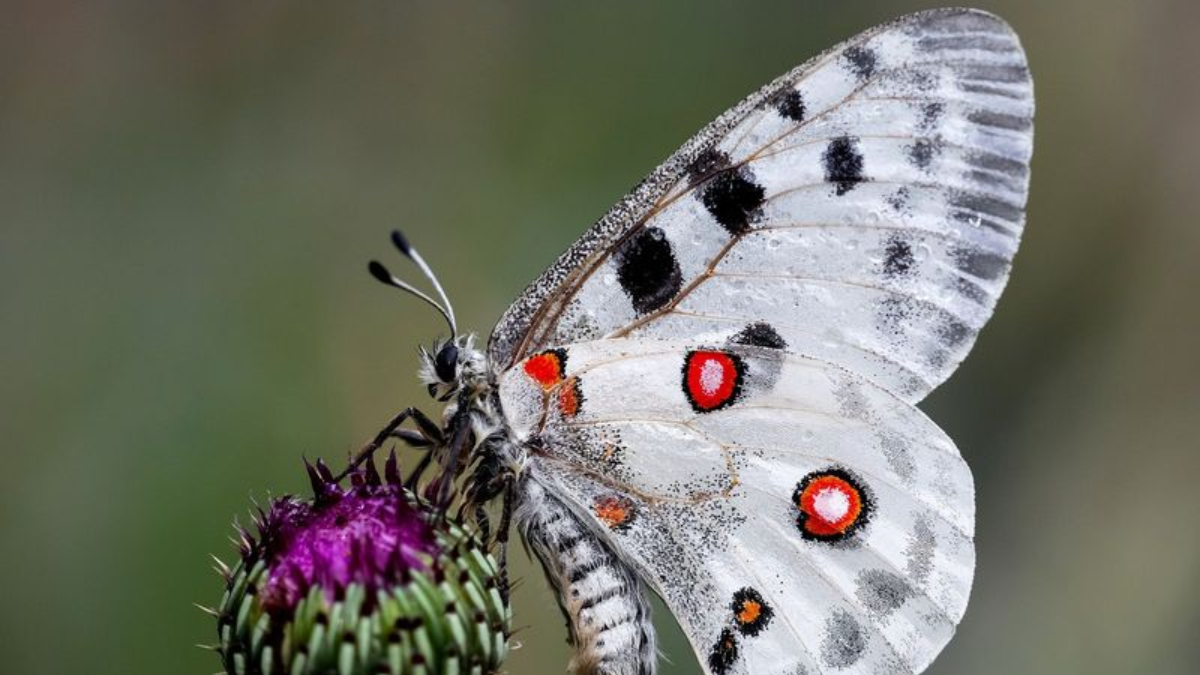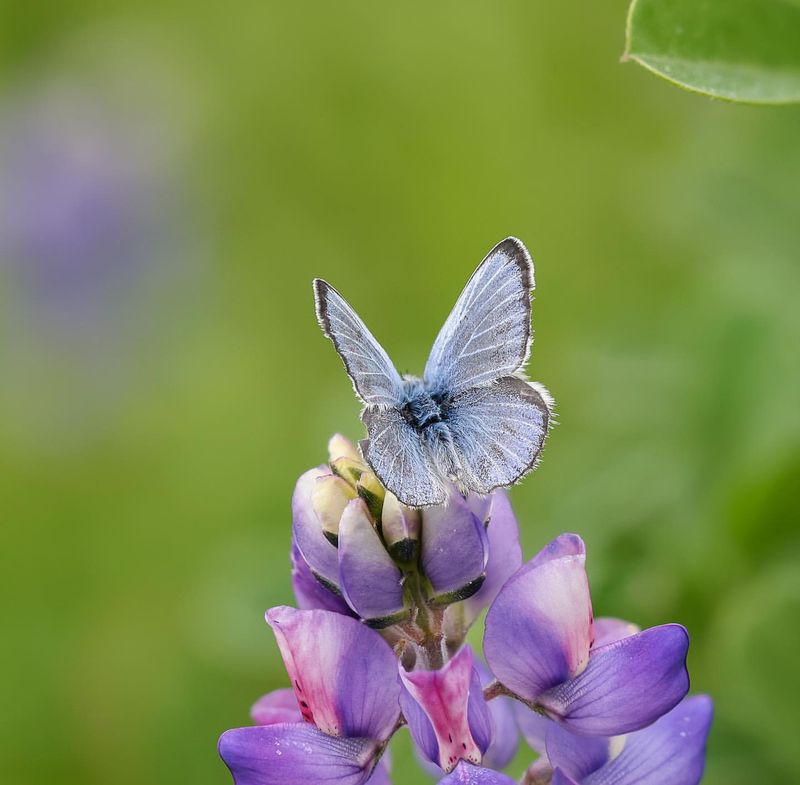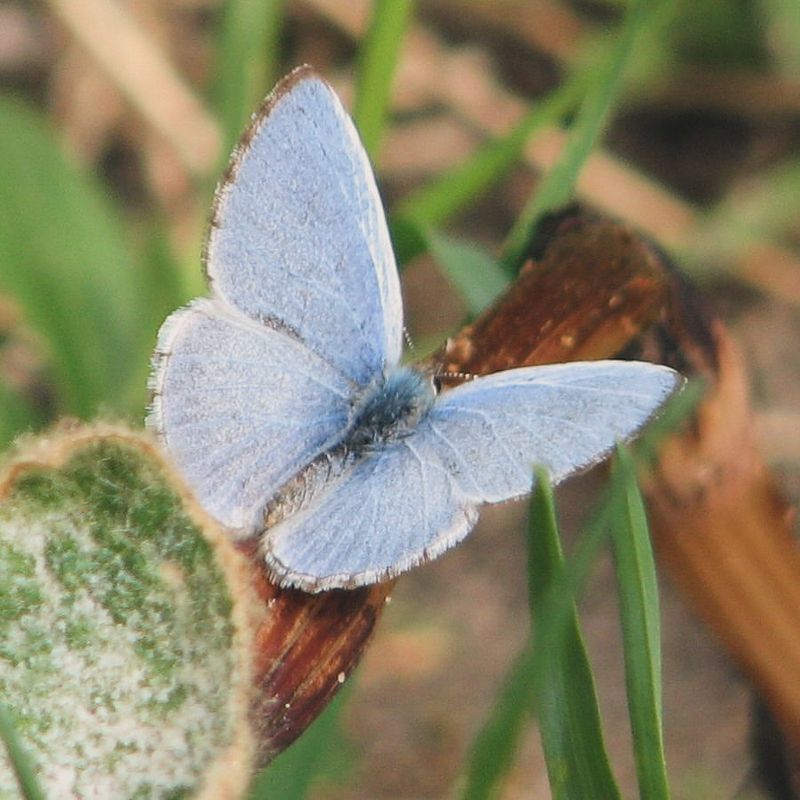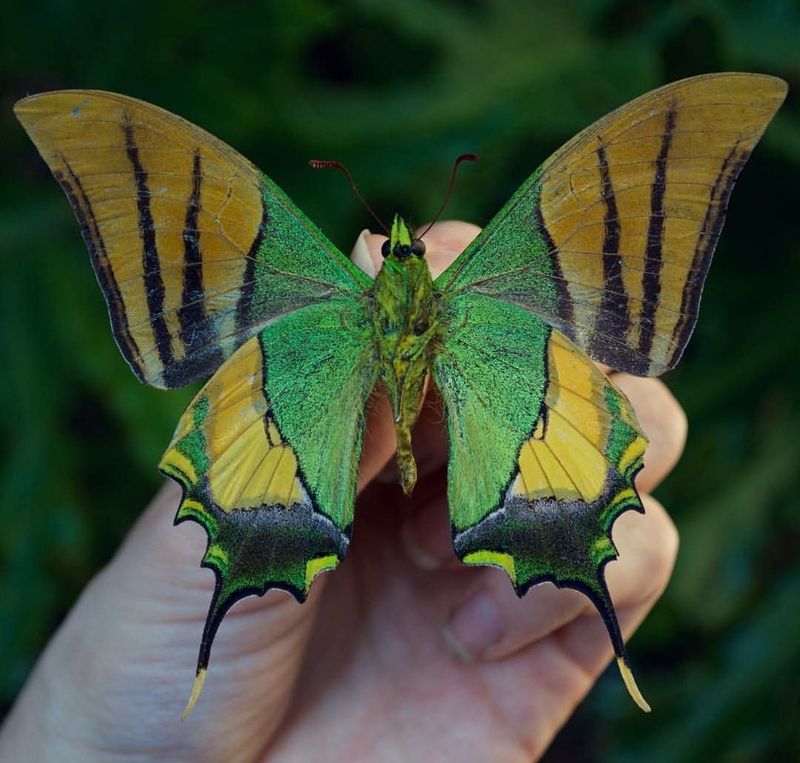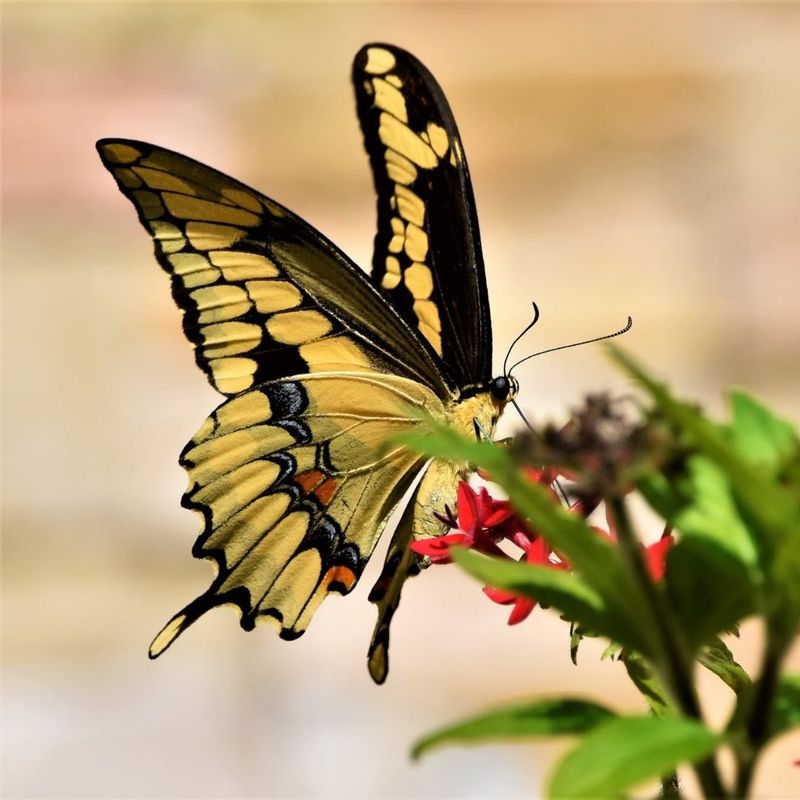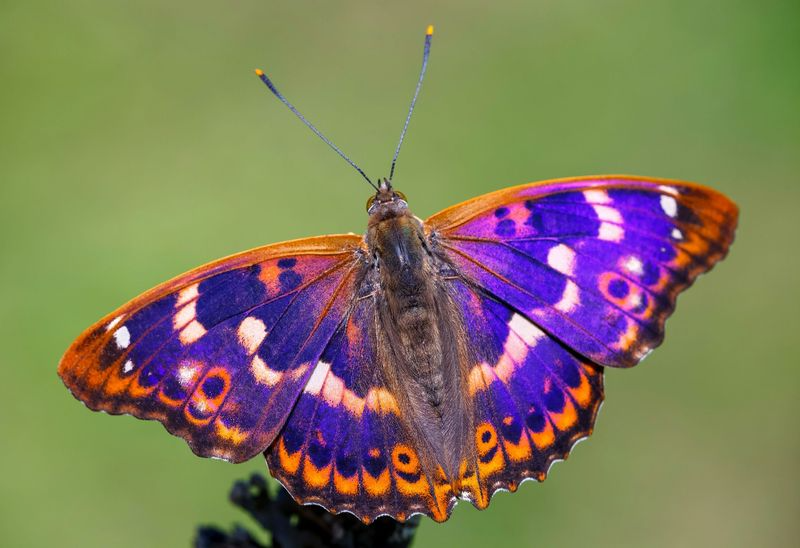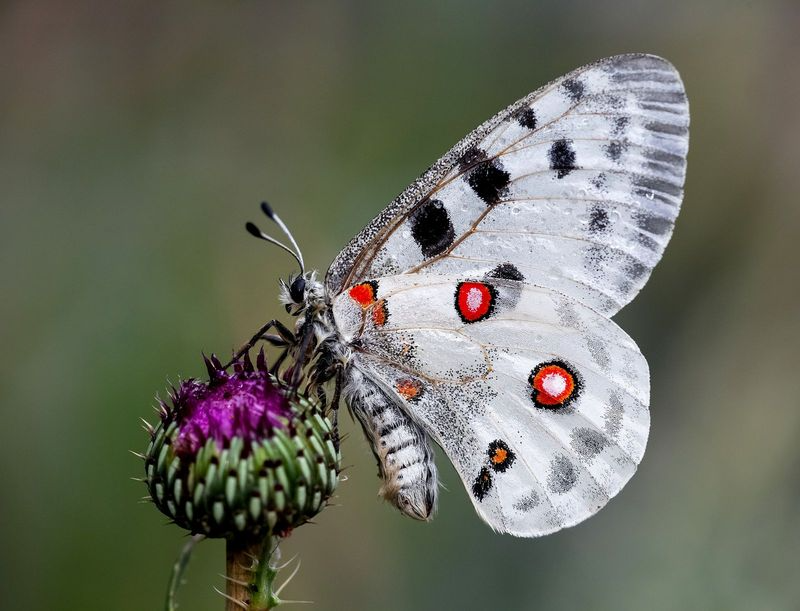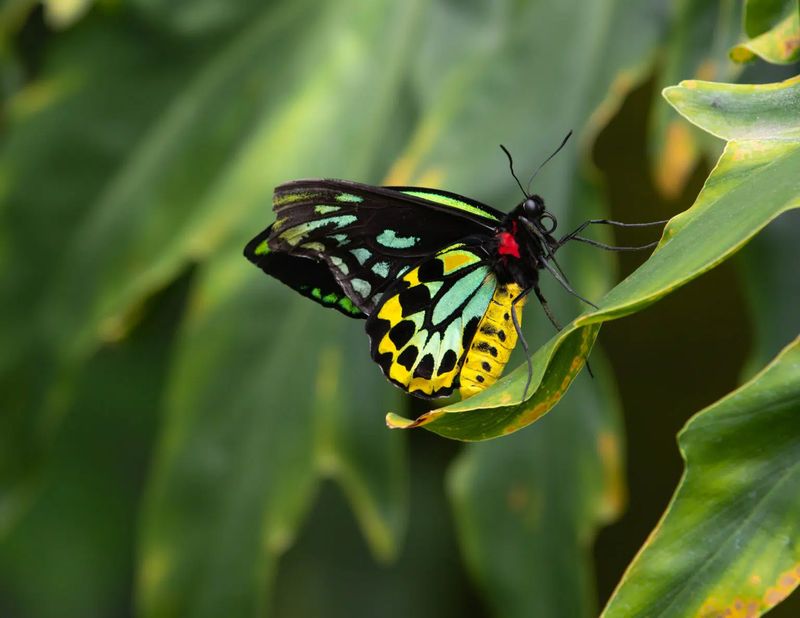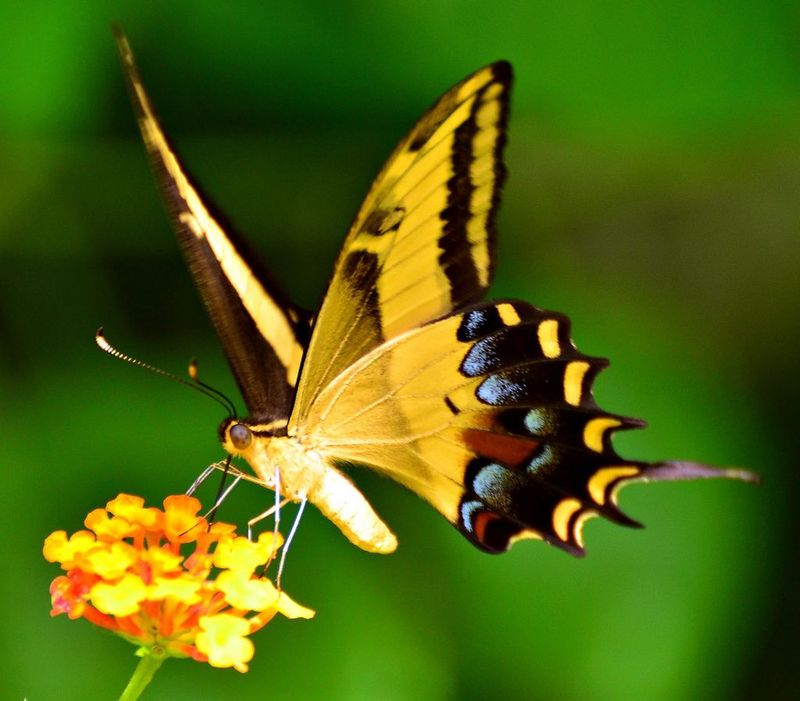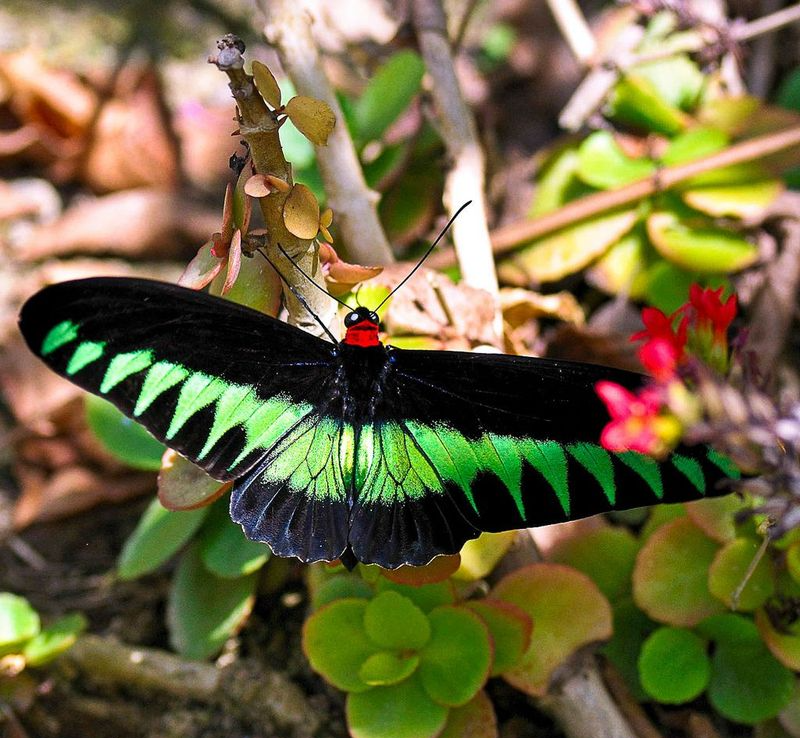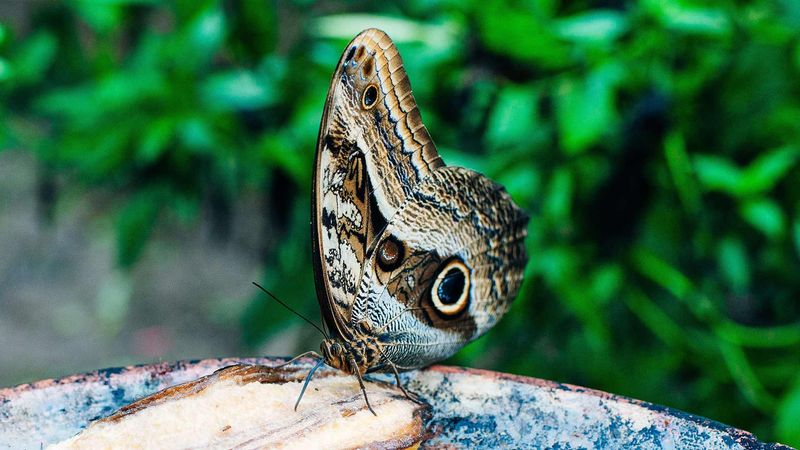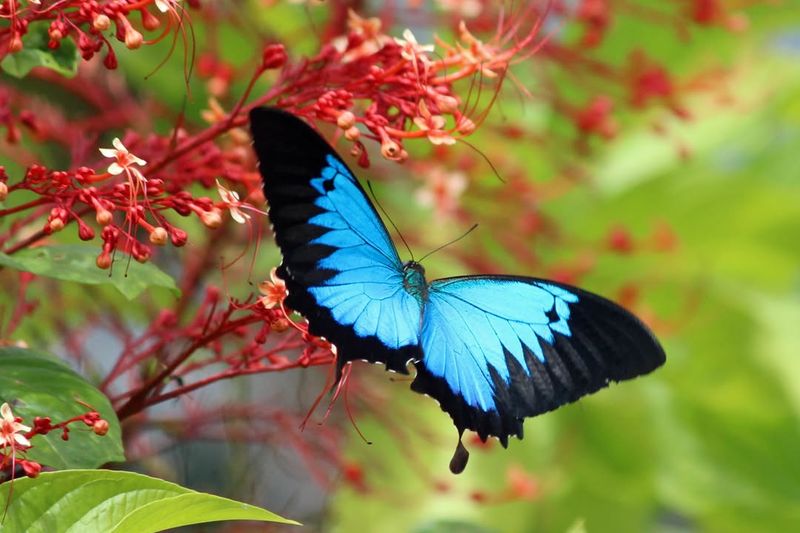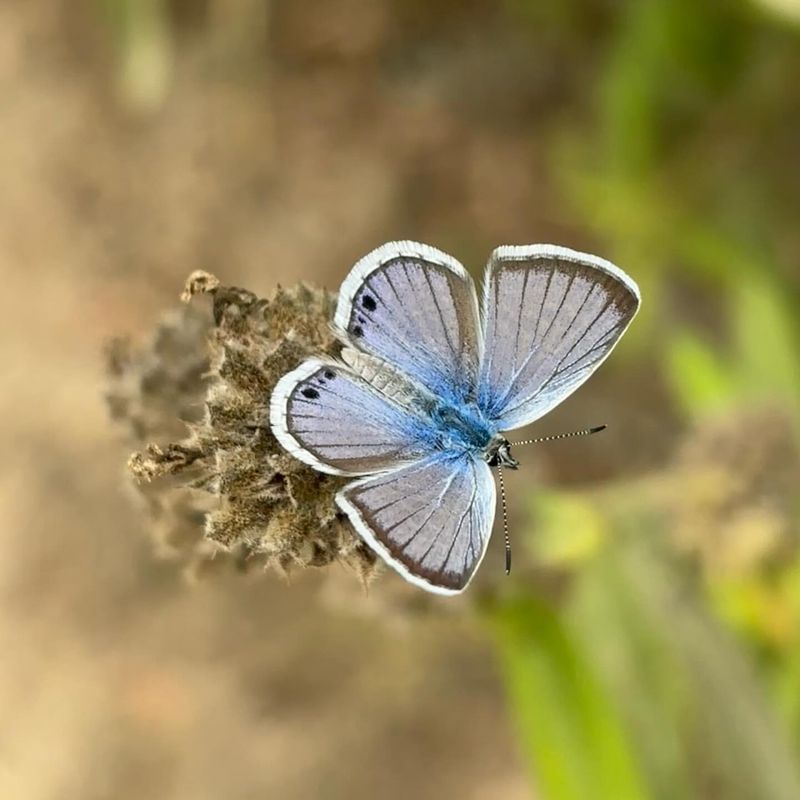📖 Table of Content:
Butterflies are like nature’s confetti—colorful, delicate, and fleeting. But some butterflies go beyond the usual garden flutterers.
These rare beauties are nature’s best-kept secrets, hiding in far-flung corners of the world and enchanting anyone lucky enough to spot them. From dazzling metallic blues to wings that mimic dead leaves, these butterflies are the VIPs of the insect world.
By the end of this article, you might just find yourself planning a bucket list trip to catch a glimpse of these 12 winged gems in the wild.
12. Palos Verdes Blue
Native to the Palos Verdes Peninsula in California, the Palos Verdes Blue butterfly is one of the rarest in the world. This tiny butterfly, with its dusty blue wings edged in black, might only be about the size of a thumbnail, but it carries a story that’s anything but small.
Once thought extinct in the early 1980s, the Palos Verdes Blue made a dramatic comeback when a population was rediscovered in 1994.
Its survival is nothing short of miraculous, thanks to the tireless efforts of conservationists who continue to protect its fragile coastal habitat.
This butterfly exclusively relies on specific host plants, like the locoweed, to lay its eggs, making its existence intricately tied to the health of its environment.
11. Iridescent Azure
Deep within the tropical rainforests, the Iridescent Azure butterfly dazzles with its shimmering blue and purple hues. Its delicate presence often goes unnoticed, camouflaged among the vibrant flora.
This butterfly thrives in the dense canopy, feeding on nectar and pollinating exotic plants. Despite its ethereal appearance, the Iridescent Azure faces threats from deforestation and climate change.
But don’t expect to find it easily—this butterfly is an expert at blending into its foggy surroundings. Seeing one feels like stepping into a magical realm, where nature’s beauty takes on an almost otherworldly quality.
10. Kaiser-i-Hind
With its bold green-and-black patterned wings tipped in bright orange, the Kaiser-i-Hind is a butterfly fit for royalty.
Found in the dense forests of the Himalayas and neighboring regions, this elusive butterfly is a true icon of its habitat. Its name, which means “Emperor of India,” hints at its regal allure.
But it’s not just its beauty that makes the Kaiser-i-Hind special—it’s also a barometer for the health of its ecosystem. This butterfly requires untouched, high-altitude forests to survive, making its presence a sign of environmental integrity.
Sadly, habitat destruction has made sightings increasingly rare. Despite its challenges, the Kaiser-i-Hind continues to inspire awe and conservation efforts, cementing its place as one of nature’s rarest and most exquisite treasures.
9. Giant Swallowtail
As the largest butterfly in North America, the Giant Swallowtail is a sight to behold. Its wingspan can reach an impressive six inches, making it feel more like a small bird than a butterfly.
Its striking black-and-yellow pattern, resembling a stained-glass masterpiece, makes it instantly recognizable.
Found throughout the southern United States and into Central America, this butterfly is often spotted gracefully fluttering around citrus trees, where its caterpillars—adorably nicknamed “orange dogs”—feed.
Despite its grandeur, the Giant Swallowtail is surprisingly agile, weaving through gardens and forests with ease. Beyond its beauty, this butterfly plays a vital role in pollination, making it a key player in its ecosystem.
8. Purple Emperor
The Purple Emperor isn’t just a butterfly; it’s a legend in European woodlands. Its dark wings, kissed with iridescent purple when caught in the right light, give it a regal aura.
But what truly sets the Purple Emperor apart is its personality. Unlike many butterflies that stick to flowers, this one has a wilder palate—it’s often seen feeding on tree sap, rotting fruit, and even animal droppings.
Despite its unusual tastes, it’s a favorite among butterfly enthusiasts, who often camp out in forests hoping for a fleeting glimpse.
7. Mountain Apollo
High above the treeline, in the remote and rugged terrain of the Alps, Pyrenees, and other European mountain ranges, the Mountain Apollo reigns supreme. Its snow-white wings, adorned with bold black and red eye-spots, look like a minimalist work of art.
This butterfly thrives in some of the most extreme environments, gliding effortlessly over rocky slopes and alpine meadows.
Its survival in such harsh conditions is nothing short of remarkable. The Mountain Apollo’s beauty and rarity have made it a target for collectors in the past, but today, conservation efforts are in place to protect this high-altitude treasure.
6. Queen Alexandra’s Birdwing
The Queen Alexandra’s Birdwing isn’t just a butterfly—it’s a giant of the insect world. With a wingspan that can reach up to 11 inches, it’s the largest butterfly on the planet.
Native to the rainforests of Papua New Guinea, this butterfly is a true showstopper, with the females sporting earthy tones of brown and cream, while the males dazzle with iridescent green and blue patterns.
Its size and vibrant coloration make it unforgettable, but its rarity adds an extra layer of allure.
5. Jamaican Giant Swallowtail
Endemic to the lush forests of Jamaica, the Jamaican Giant Swallowtail is as unique as the island it calls home. With a wingspan of up to six inches, this butterfly features bold black-and-yellow markings that are impossible to miss.
Its preferred habitats are remote, making it a rare treat for those willing to venture off the beaten path.
This butterfly is not just a symbol of Jamaica’s rich biodiversity but also a reminder of the importance of preserving the island’s natural heritage.
4. Rajah Brooke’s Birdwing
Named after James Brooke, the first white Rajah of Sarawak, this butterfly is a true symbol of tropical opulence.
Found in the rainforests of Southeast Asia, Rajah Brooke’s Birdwing is a masterpiece of emerald-green and black patterns, with a metallic sheen that catches the light like silk. It’s often spotted in forest clearings, gracefully gliding through the air or sipping nectar from flowers.
This butterfly’s beauty and rarity have made it a favorite among collectors, and its presence is a reminder of the lush, vibrant ecosystems that Southeast Asia is known for.
3. Machu Picchu Satyr
Nestled in the historic landscapes of Peru, the Machu Picchu Satyr is an understated gem with its subtle brown wings adorned with intricate patterns. Its presence in such a renowned location adds an element of mystery.
This butterfly thrives in the unique microclimate surrounding the ancient Incan ruins, a habitat under constant threat from tourism and environmental changes. Protecting this area is crucial not only for the Satyr but also for preserving cultural heritage.
2. Ulysses Butterfly
The Ulysses Butterfly, also known as the Blue Mountain Swallowtail, is a tropical marvel found in Australia and nearby islands
Its electric blue wings are so vibrant they almost seem to glow, creating a striking contrast against the rainforest’s lush green backdrop. This butterfly is known for its fast, erratic flight pattern, making it as challenging to catch a glimpse of as it is mesmerizing to behold.
Often considered a symbol of happiness and good fortune, the Ulysses Butterfly captivates everyone lucky enough to see it.
1. Alcon Blue
The Alcon Blue is a small but captivating butterfly with a life story as fascinating as its appearance. Found in European meadows, this butterfly’s delicate blue wings hide a remarkable secret: its caterpillars rely on a symbiotic relationship with specific ants.
After hatching, the caterpillars mimic the ants’ chemical signals, tricking the ants into taking them into their nests. There, they’re cared for like royalty until they’re ready to emerge as butterflies.
This unique survival strategy highlights the incredible intricacy of nature. The Alcon Blue’s beauty lies not just in its appearance but also in its complex and ingenious way of life, a reminder of the hidden wonders all around us.
